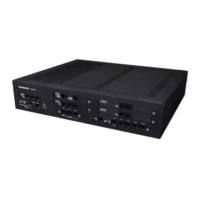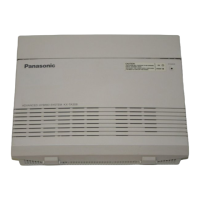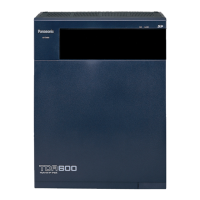Service Number of Ports Load (Busy Ratio %) DSP Cost
*1
Total DSP Cost 18.55
*1
DSP Cost = Number of Ports ´ Resource cost per port (unit) ´ Load
In the example above, the total DSP cost is 18.55. In such an environment, a PBX with a DSP S card (max.
63 DSP resources) would be sufficient.
Example 2: Call Centre
In a call centre, both the number of trunks and number of extensions are likely to be very high. Also, since
employees are constantly receiving calls, the system load will be high. Furthermore, calls are often recorded
at call centres to provide quality-of-service monitoring.
Service
Number of Ports Load (Busy Ratio %) DSP Cost
*1
Trunk using G.729 codec 8 50% 8.8
Trunk using G.711 codec 128 80% 102.4
Extension using G.729 codec 32 50% 35.2
Extension using G.711 codec 128 80% 102.4
IP-CS using G.729 codec 8 50% 8.8
Unified Messaging 8 — 10.4
Two-way Recording 4 — 9.2
OGM 4 — 8.0
Conference 12 — 6.0
Total DSP Cost 291.2
*1
DSP Cost = Number of Ports ´ Resource cost per port (unit) ´ Load
In this example, the total DSP cost is 291.2. In this case, two DSP cards are necessary: at minimum one DSP
L card (max. 254 DSP resources) and one DSP S card (max. 63 DSP resources).
Conditions
• Calls that are established via P2P (® 5.2.3 Peer-to-Peer (P2P) Connection) do not use the PBX’s DSP
resources, so they may be excluded from the usage calculation.
• One-look Networking (® 4.2 One-look Networking)
Since DSP resources are not shared between PBXs, the resource advisor should be used to calculate the
resource usage for each PBX individually.
PC Programming Manual References
9.34 PBX Configuration—[1-5] Configuration—DSP Resource
482 Feature Guide
5.5.4 DSP Resource Usage

